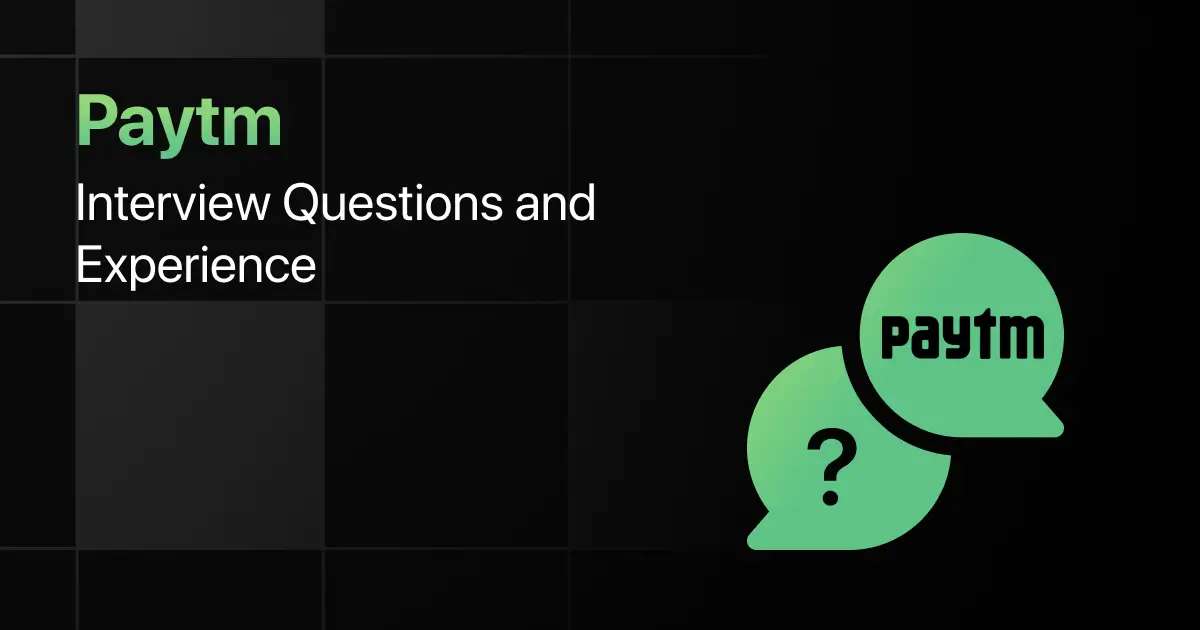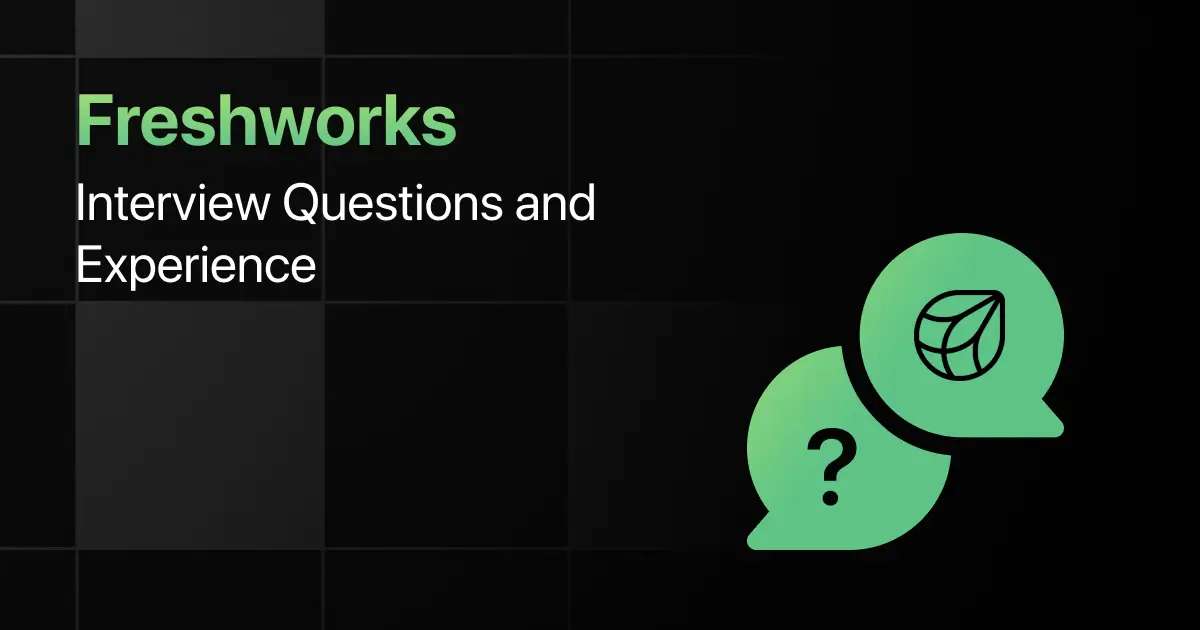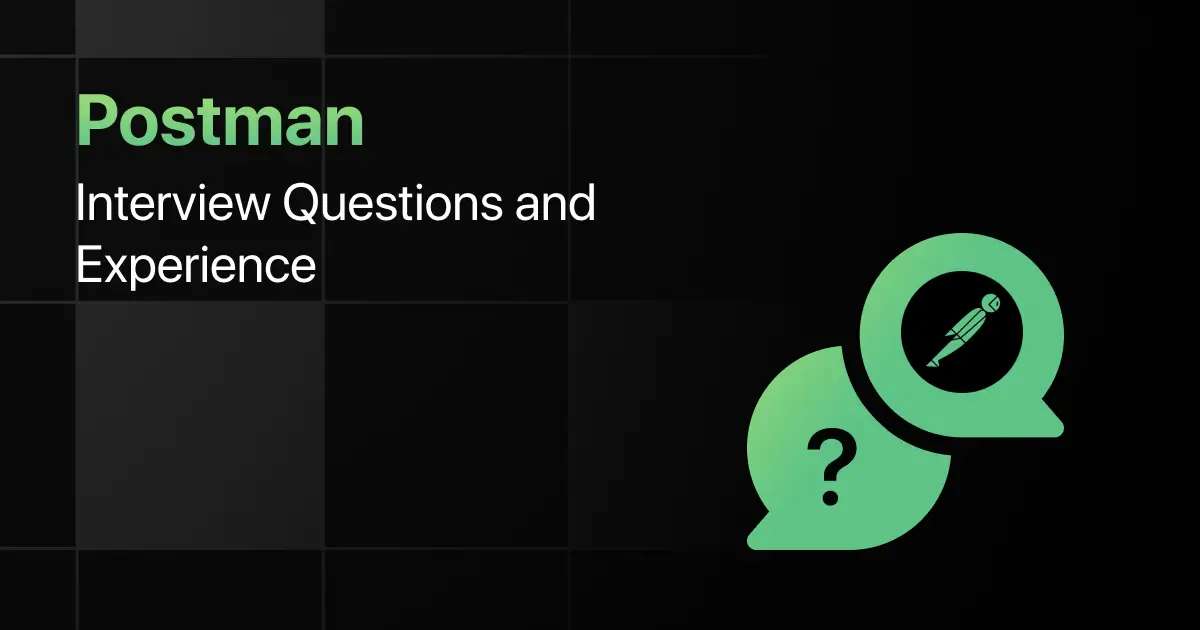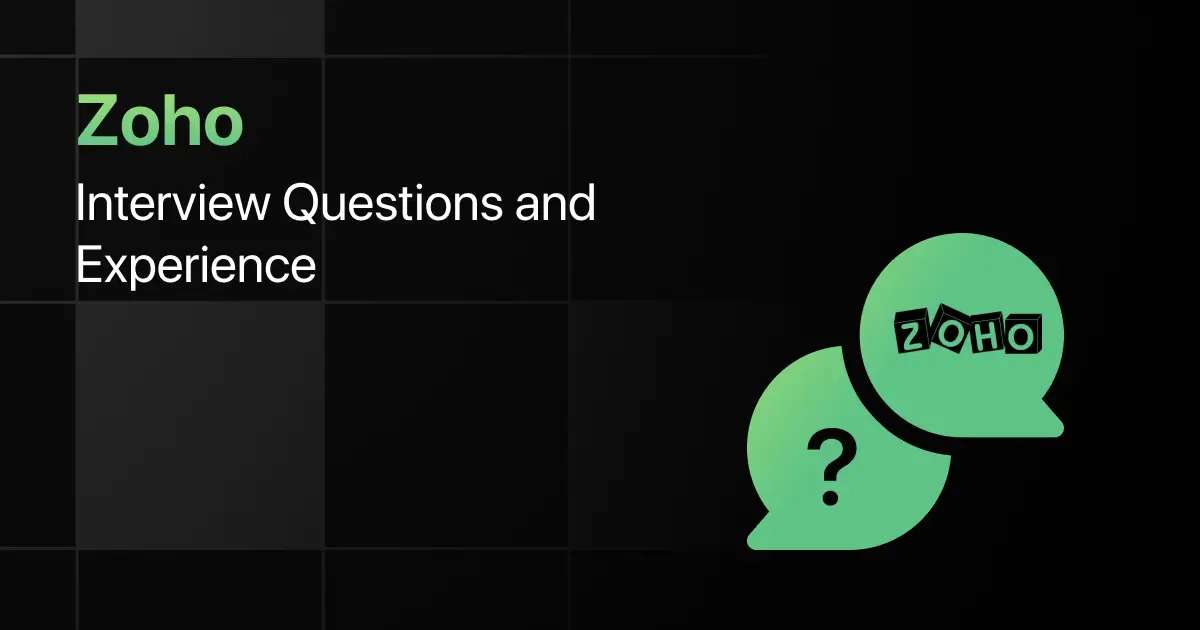Paytm Interview Questions and Experience

Preparing for a Paytm interview requires a clear understanding of the company’s hiring process, the type of questions asked, and the skills expected from candidates.
Whether you are a fresher or an experienced professional, Paytm focuses on evaluating problem-solving abilities, technical expertise, and communication skills.
This article provides a detailed overview of the Paytm hiring process, commonly asked interview questions with answers, preparation tips, and real interview experiences to help you succeed.
Paytm Hiring Process – Overview
Here’s a quick overview of Paytm’s hiring process:
| Category | Details |
|---|---|
| Eligibility | Open to both freshers and experienced candidates. Preferred degrees include B.Tech, M.Tech, MCA, MBA, or equivalent. |
| Rounds | Typically 3–5 rounds including Online Assessment, Technical Interviews (1–2), System Design/Case Study (for experienced roles), and HR/Managerial Round. |
| Job Roles Offered | Software Development Engineer (SDE), Data Analyst, Product Manager, QA Engineer, Business Analyst, and related roles. |
| Salary Range | Freshers: ₹6–10 LPA (varies by role and location). Experienced professionals: ₹12–35 LPA, depending on role and seniority (source: AmbitionBox & Glassdoor). |
| Apply Link | Apply Now |
Top Paytm Interview Questions with Answers
When preparing for Paytm interviews, candidates can expect a mix of technical, role-specific, and behavioral questions. The focus is on problem-solving, applied technical knowledge, and assessing cultural fit. Below is a collection of commonly asked questions with sample answers to guide your preparation.
1. Technical Questions
- What is the difference between a clustered and non-clustered index in SQL?
A clustered index sorts and stores rows in order, while a non-clustered index creates a separate structure pointing to the data. - Explain ACID properties in database transactions.
ACID stands for Atomicity, Consistency, Isolation, and Durability, ensuring reliable database transactions and preventing data anomalies. - What is multithreading in Java, and how is it implemented?
Multithreading allows concurrent execution of tasks. It can be implemented using the Thread class or Runnable interface. - How does garbage collection work in Java?
Garbage collection automatically reclaims memory by removing objects that are no longer referenced in the program. - What is the difference between REST and SOAP APIs?
REST is lightweight, uses HTTP, and is resource-oriented, while SOAP is protocol-based and relies on XML for messaging. - What is the time complexity of binary search?
The time complexity of binary search is O(log n), as the search space halves with each iteration. - Explain normalization in databases.
Normalization organizes data into tables to reduce redundancy and improve integrity through forms like 1NF, 2NF, and 3NF. - What are microservices, and why are they used?
Microservices are independent services that work together. They improve scalability, fault tolerance, and ease of deployment. - What is the difference between TCP and UDP?
TCP is connection-oriented, reliable, and slower, while UDP is connectionless, faster, but less reliable. - How does hashing work in data structures?
Hashing maps data to a fixed-size value (hash) using hash functions, enabling quick lookups and retrieval. - What is a deadlock in operating systems?
A deadlock occurs when processes wait indefinitely for resources locked by each other, preventing execution. - Explain CAP theorem in distributed systems.
CAP states that a distributed system can provide only two of Consistency, Availability, and Partition tolerance simultaneously.
2. Role-Based Questions
For Freshers (SDE-1)
- What is the difference between stack and queue?
A stack follows LIFO (Last In, First Out), while a queue follows FIFO (First In, First Out). - Write a program to reverse a linked list.
The list can be reversed by iteratively reassigning node pointers until the head is updated. - What are primary keys and foreign keys in SQL?
A primary key uniquely identifies a record, while a foreign key references the primary key in another table. - How would you optimize a SQL query for faster execution?
By creating indexes, avoiding subqueries, using joins efficiently, and analyzing execution plans.
For Data Analyst
- What is the difference between inner join and left join in SQL?
An inner join returns only matching rows, while a left join returns all rows from the left table plus matches. - How would you handle missing values in a dataset?
By using imputation techniques such as mean, median, mode substitution, or removing incomplete rows. - What is the difference between correlation and causation?
Correlation shows a relationship between two variables, while causation indicates one variable directly affects another. - How would you optimize a dashboard query fetching millions of rows?
By using indexing, caching, pre-aggregated tables, and limiting data retrieval with filters.
For Software Developer (Backend)
- Explain the difference between monolithic and microservices architecture.
A monolithic app is a single unit, while microservices are modular and independently deployable components. - What is caching, and why is it important in backend systems?
Caching stores frequently accessed data in memory to reduce latency and improve performance. - How would you design a payment transaction system?
By ensuring ACID compliance, idempotency, concurrency handling, and secure transaction management. - What is load balancing, and how does it work?
Load balancing distributes incoming requests across servers to ensure availability, scalability, and reliability.
For Managerial Roles
- How do you handle conflicts within your team?
By encouraging open communication, understanding both perspectives, and working towards a collaborative solution. - How do you prioritize multiple high-priority projects?
By assessing impact, aligning with business goals, delegating tasks, and managing timelines effectively. - How do you measure the success of your team?
Through key performance indicators (KPIs), project delivery, code quality, and employee satisfaction. - How do you ensure alignment between business and technical teams?
By setting clear goals, regular sync-ups, and ensuring mutual understanding of business objectives and technical feasibility.
3. Behavioral Questions
- Tell me about a time you handled a difficult situation at work.
I resolved a production issue by quickly identifying the root cause, collaborating with my team, and implementing a hotfix within hours. - How do you manage tight deadlines under pressure?
I break tasks into smaller milestones, prioritize critical activities, and communicate progress regularly to avoid last-minute surprises. - Describe a time when you worked in a team to achieve a common goal.
During a group project, I took ownership of backend integration, ensuring timely delivery and smooth collaboration with frontend developers. - What motivates you to work at Paytm?
The opportunity to work on large-scale fintech products that impact millions of users motivates me to contribute and grow. - How do you handle feedback from peers or managers?
I treat feedback as an opportunity to improve, analyze it constructively, and make necessary adjustments in my work. - What are your long-term career goals?
My goal is to grow into a senior engineering role, contribute to scalable systems, and mentor younger developers in the future.
Paytm Interview Experiences
1. Paytm SDE Intern + FTE Interview Experience (Fresher)
Here is the interview experience of a candidate who appeared for the Paytm SDE Intern + FTE role during on-campus placements in 2025.
Candidate Background:
Final-year B.Tech student in Computer Science with specialization in Data Science. Strong foundation in data structures, SQL, and OOP concepts.
Interview Process They Faced:
- Resume Shortlisting based on academic performance and technical skills.
- Technical Assessment with 3 medium-level coding problems and 2 SQL queries.
- Two Technical Interview Rounds covering DSA, OOPs, SQL, and database fundamentals.
- Both interviews conducted virtually via Google Meet with functional coding in C++.
Questions Asked:
- Coding: Reverse a Linked List, Lowest Common Ancestor in BST, Median of Stream of Integers, Kadane’s Algorithm, LRU Cache.
- Theoretical: ACID properties in DBMS, joins in SQL, primary vs foreign keys, clustered vs non-clustered indexes.
- OOP: Function overloading vs overriding, polymorphism with examples.
- Conceptual: BFS vs DFS and time/space complexity discussions.
Outcome & Difficulty Level:
Cleared both technical rounds successfully. Overall difficulty was moderate to high with strong emphasis on problem-solving and core computer science concepts.
2. Paytm Senior Software Engineer Interview Experience (Experienced)
Here is the interview experience of a candidate who appeared for the Paytm Senior Software Engineer role in 2025.
Candidate Background:
Experienced professional applying through referral with prior expertise in frontend and system design.
Interview Process They Faced:
- Round 1 (Online Test): Conducted on HackerRank with DSA, 6 MCQs, and a React-based machine coding task.
- Round 2 (Technical Interview): Covered data structures, JavaScript fundamentals, frontend basics, and CSS/HTML questions.
- Final Round (LLD + Projects): Discussion of past projects, low-level design for scalable systems, and asynchronous JavaScript tasks.
Questions Asked:
- Coding: Implement a map polyfill, find largest duplicate in an array, async fetch simulation with promises.
- Theoretical: Logical reasoning questions, CSS styling, HTML basics, modular system design approaches.
- Discussion on scalability, modularity, and handling errors in asynchronous environments.
Outcome & Difficulty Level:
Rejected after final round. Feedback suggested stronger focus on advanced design patterns and optimization was needed. Difficulty was high, testing both coding depth and system design capability.
Preparation Tips for Paytm Interviews
Preparing for a Paytm interview requires a balance of technical knowledge, problem-solving ability, and clear communication. Below are some practical tips to help you perform confidently.
- Know the Basics: Revise core subjects such as Data Structures, Algorithms, Operating Systems, and Databases, as these are frequently tested in technical rounds.
- Practice DSA: Regularly solve problems on platforms like LeetCode and HackerRank, focusing on medium-level questions to improve speed and accuracy.
- Understand Fintech: Familiarize yourself with digital payment systems, UPI, and transaction workflows to align with Paytm’s business domain.
- Mock Interviews: Take mock interviews to practice thinking aloud, explaining approaches, and handling follow-up questions effectively.
- Resume Clarity: Be thorough with your projects and technologies listed in your resume, as interviewers often ask in-depth questions about them.
- Behavioral Prep: Prepare examples from past experiences that showcase teamwork, problem-solving, and adaptability to handle HR and managerial questions.
Final Words
Cracking Paytm interviews is not only about solving coding problems but also about showing structured thinking and good communication skills.. With consistent preparation and confidence, you can increase your chances of securing a role at Paytm.
Frequently Asked Questions
1. What are the common interview questions asked in Paytm interviews?
Common questions include data structures, algorithms, system design, SQL queries, project discussions, and scenario-based problem-solving relevant to fintech applications.
2 . Are Paytm interview questions tough for freshers?
The questions are moderately tough for freshers, with more focus on DSA, problem-solving ability, and clarity of concepts rather than advanced system design.
3. How long does the Paytm interview process usually take?
The process generally takes 2–4 weeks depending on the role, with multiple technical and HR rounds spread across different days.
4. What technical skills should candidates focus on for Paytm interviews?
Candidates should focus on DSA, OOPs, SQL, operating systems, networking basics, and knowledge of payment systems or transaction workflows.
5. What are the common mistakes candidates make in Paytm interviews?
Common mistakes include writing unoptimized code, not explaining the thought process, being unclear about projects, and neglecting behavioral preparation.
6. How many rounds are there in the Paytm interview process?
Typically, there are 3–5 rounds, including online assessment, technical interviews, managerial rounds, and an HR discussion.
7. Are Paytm interview questions different for freshers and experienced candidates?
Yes, freshers face more coding and fundamentals-focused questions, while experienced candidates are assessed on system design, scalability, and domain expertise.
8. What is the best way to prepare for Paytm interview?
The best way is to practice coding regularly, revise computer science fundamentals, and use resources like PlacementPreparation.io for structured interview preparation.
Explore More for
Related Posts


Freshworks Interview Questions and Experience
Freshworks is one of India’s leading SaaS companies, offering customer engagement and business software products used worldwide. Candidates applying to …









